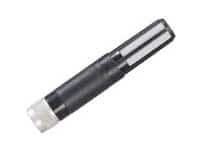A Data Acquisition System (DAS) is an integrated system designed to collect, measure, and record data from various sources like sensors, instruments, and other measurement devices. DAS is commonly used to monitor physical quantities such as temperature, pressure, humidity, and voltage, converting them into digital signals for analysis and reporting. The collected data can then be used for decision-making, process monitoring, or stored for future analysis.
Why It’s Important: DAS helps businesses and industries automate data collection, reducing manual errors, and providing real-time insights for operational efficiency. It’s essential for industries like manufacturing, environmental monitoring, and healthcare, where accuracy and timeliness are critical.
Improved Accuracy: DAS minimizes human error by automating data collection and providing precise, real-time measurements.
Increased Efficiency: By automating data logging, DAS reduces the need for manual intervention, saving time and labor costs.
Real-Time Monitoring: It allows for continuous monitoring of systems, enabling prompt identification of issues and more proactive management.
Data-Driven Decisions: DAS enables businesses to make better decisions based on accurate, timely data, improving process optimization.
Cost Savings: By detecting issues early, DAS helps avoid costly downtime, repairs, and quality issues in production lines or facilities.
A DAS consists of several key components that work together to collect, process, and store data:
Sensors: Devices that measure physical properties (e.g., temperature, pressure, humidity).
Signal Conditioning: This component adjusts the sensor’s output to a level suitable for processing, removing noise or interference.
Analog-to-Digital Converter (ADC): Converts the analog signals from the sensor into digital data.
Data Logger: A device that stores the acquired data for analysis, typically equipped with memory and the ability to process or transmit data.
Software: Used for configuring the system, visualizing the data, and conducting analysis.
Data Collection: Sensors detect a physical phenomenon (e.g., temperature or pressure).
Signal Conditioning: The raw data is processed, amplified, or filtered to improve accuracy.
Conversion: The analog signals are converted into digital data by an ADC.
Storage/Transmission: The data is stored in a local device (data logger) or transmitted to a central system (e.g., cloud or local server).
Analysis and Reporting: Data is analyzed using software to gain insights, create reports, or trigger actions.
PC-based DAS: These systems are connected to a computer and typically offer more advanced processing and storage capabilities.
Standalone DAS: These systems operate independently, often used for portable data collection in the field.
Wireless DAS: These systems allow data collection without the need for physical connections, ideal for remote or hard-to-reach locations.
Networked DAS: These systems can communicate with other devices or systems over a network, making them ideal for large-scale or industrial applications.
Real-Time DAS: These systems provide instant data feedback, allowing for immediate action when anomalies or issues are detected.
Manufacturing: Used for real-time monitoring of equipment, ensuring quality control and predictive maintenance.
Healthcare: DAS collects patient data from various medical instruments, such as ECG or EEG monitors, providing real-time diagnostics.
Environmental Monitoring: Used in weather stations, water quality monitoring, and pollution tracking.
Energy: Collects data from power plants, wind turbines, and solar panels to monitor performance and optimize energy production.
Scientific Research: DAS helps capture accurate data in controlled environments for research, such as laboratory experiments or climate studies.





Application Requirements: What kind of data do you need to capture, and how critical is real-time monitoring?
System Scalability: Does your DAS need to grow with your business or project needs?
Budget: Ensure that the system selected fits within your financial constraints while meeting your performance requirements.
Integration: Will the DAS need to integrate with other systems (e.g., SCADA, PLC)?
Accuracy: Choose a system that can provide the precision necessary for your industry, such as scientific research or medical applications.
Proper Installation: Follow the manufacturer’s guidelines for hardware installation, ensuring all components are connected correctly.
Calibration: Calibrate sensors and devices to ensure accurate readings and data integrity.
System Configuration: Configure the software settings, including alarm thresholds, data logging intervals, and report generation.
Testing: Test the system thoroughly before full-scale deployment to ensure that it meets accuracy and reliability standards.
Signal Interference: External factors like electromagnetic interference can distort the data. Use shielded cables and proper grounding to mitigate this.
Sensor Calibration: Regular calibration is essential for accurate measurements. Ensure all sensors are calibrated periodically.
Data Overload: Handling large volumes of data can be difficult. Invest in scalable data storage and processing solutions, such as cloud-based systems.
System Integration: Different devices may not always be compatible. Choose a DAS that supports open standards or offers integration with your existing systems.
ISO 9001: Ensures that the DAS meets quality management standards, which is essential for industries like manufacturing.
ISO 17025: Important for labs or organizations performing calibration and testing.
NIST Traceability: Ensures that the data captured by the DAS is traceable to national standards, a critical requirement in scientific and industrial applications.
Industry-Specific Regulations: Healthcare, energy, and environmental monitoring industries must adhere to specific regulations, such as FDA guidelines or environmental standards.
A Data Acquisition System (DAS) is used to collect, monitor, and analyze data from various sources like sensors, instruments, and industrial machinery.
A DAS collects data from sensors, processes it, and stores it in a digital format for analysis. It often involves signal conditioning, conversion, and transmission of the data for further use.
Industries such as manufacturing, healthcare, energy, and environmental monitoring use DAS to improve efficiency, monitor equipment, and comply with regulatory standards.
DAS calibration depends on the application and environment but should generally be performed regularly, based on industry standards and manufacturer recommendations.
Yes, modern DAS systems can be wireless or connected to a network, allowing for remote monitoring and control, making them ideal for hard-to-reach or hazardous locations.
